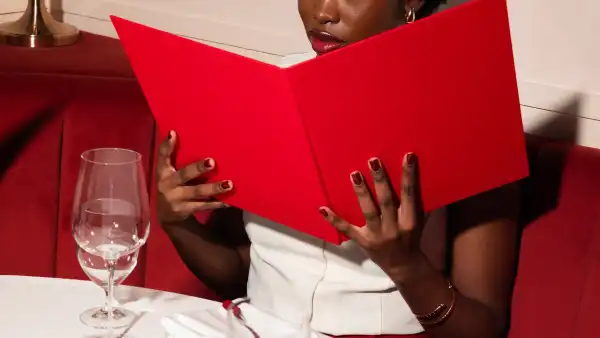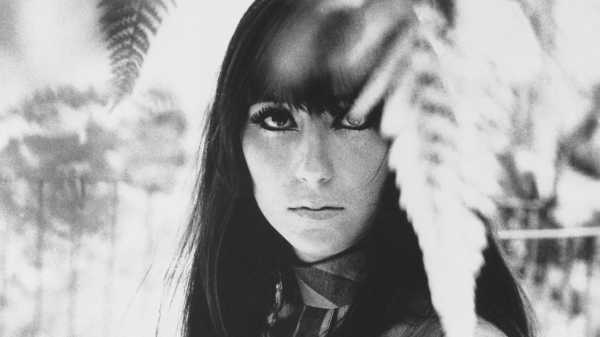
When Bob Mackie met Cher, it was a match made in spangles. This was 1967, and Sonny Bono and Cher were guest stars on “The Carol Burnett Show,” where Mackie was the costume designer. “They came in, and I thought, Oh, no, what I am going to do with that girl?” Mackie, who is now seventy-nine, recalled recently. “In all the pictures of her, she’s kind of sullen. And she looks like she’s two heads taller than him—which she wasn’t. So, she came in to the fitting, and I was blown away. She was the most adorable Audrey Hepburn little sprite of a girl, with her black hair in pigtails. I thought, She’s cute!”
Mackie went on to create decades’ worth of Cher’s outrageous outfits, arguably surpassing Bono as her defining collaborator. His willingness to try anything matched her willingness to try on anything—even as Mackie piled on sequins and subtracted fabric. “It wasn’t until a little later, when we started showing a little midriff, that people started getting excited,” he said. “She was so different from what people thought an American beauty should look like—all Scandinavian, with blond hair and blue eyes and a big poofy hairdo. Nothing intimidated her. Anything I put on her, she went, ‘Oh, that’s fun.’ It never occurred to her to wear anything ordinary.”
Mackie started his Hollywood career as a sketch artist for the French designer Jean Louis and a costume assistant on “The Judy Garland Show.” Although his long career includes work with Tina Turner, Madonna, Bette Midler, Diana Ross, and Elton John, his style odyssey with Cher is the jet-black feather in his cap. Perhaps most memorably, there was the witchy plumed number that she wore to the Oscars, in 1986, a kind of revenge for not getting nominated for “Mask.” “I said, ‘Don’t you think you’ll be pulling focus from who you’re presenting to?’ ” Mackie recalled. “And she said, ‘Oh, they won’t mind!’ ” (Ask Don Ameche, that year’s Best Supporting Actor.) Equally notorious: the “nude” dress that she wore on the cover of Time, in 1975. “I didn’t know it was going to cause such a hullabaloo,” Mackie says.
Mackie’s costumes are the best thing about “The Cher Show,” a new Broadway bio-musical currently running at the Neil Simon Theatre. The show is, first and foremost, a celebration of a diva’s life and times (a trio of actresses play Cher at different ages), but it’s just as much a retrospective of Mackie’s envelope-pushing designs, many of which he re-created for Broadway. In one number, about a dozen cast members—including one man—swan out in Mackie’s most ostentatious creations. The clothes get an ovation.
Mackie still begins his design process with detailed sketches, which are often as eye-catching as the final product. Here, he shares fifteen from “The Cher Show.”
1. Mackie imagines the five-year-old Cherilyn Sarkisian, in 1951. “She never tried to be anyone else,” he said. “She was just true to what she liked best.”
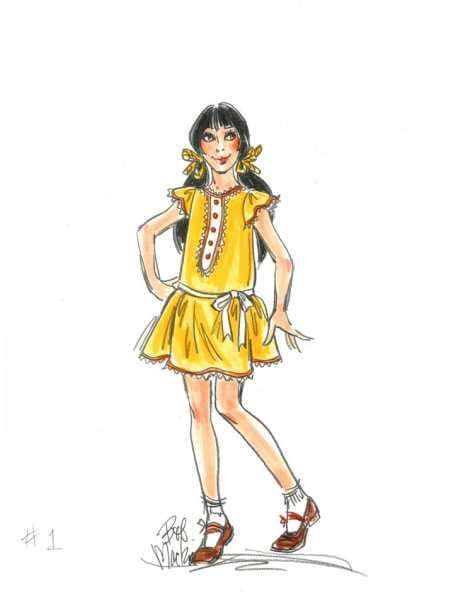
Illustrations by Bob Mackie
2. Cher at sixteen, in 1963, the year she met Sonny Bono in a Los Angeles coffee shop. Through Bono, Cher was hired by Phil Spector to sing backup for the Ronettes and the Righteous Brothers. By 1964, she and Bono were performing as “Caesar and Cleo.”
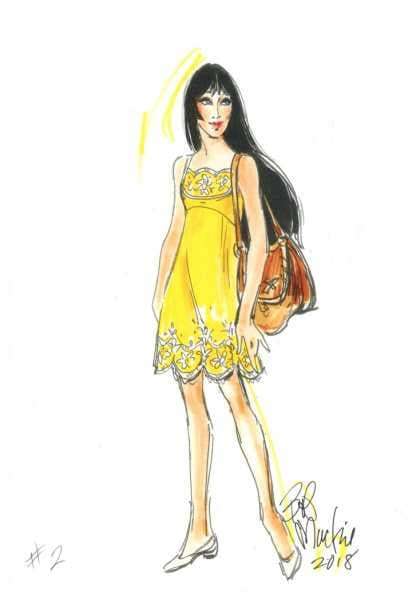
3. Mackie called this the “classic Sonny and Cher look”: bell-bottom pants, fur vests, long hair. “They were kind of like New Age cave people,” he said. In 1965, they released “Look at Us,” which contained the breakout single “I Got You Babe.”
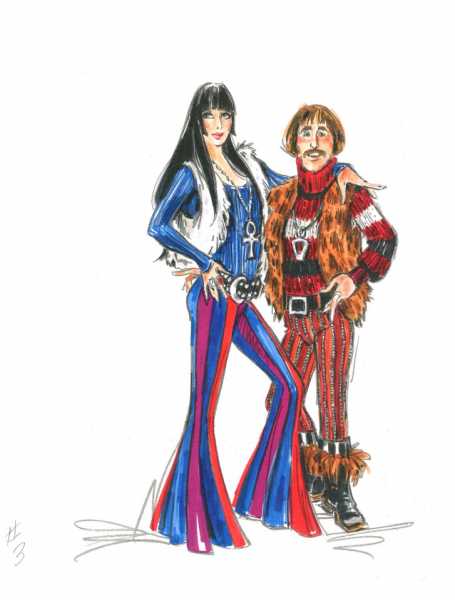
4. Here, Sonny and Cher after the first wave of success had come and gone, around when they met Mackie, on “The Carol Burnett Show.” “They had no money, they were living in L.A., and she was very into ethnic things, like those caftans,” Mackie said.
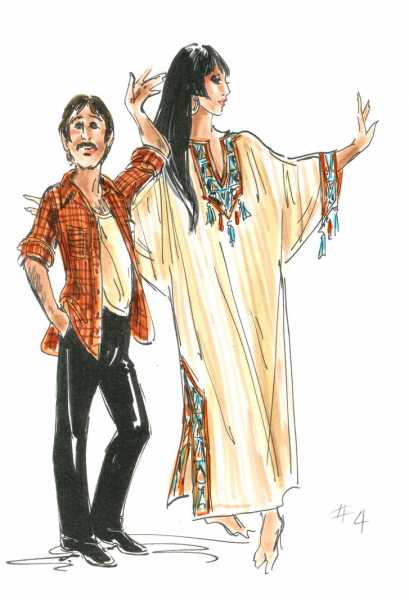
5. This sketch captures a more elegant look for Las Vegas, where Sonny and Cher reinvented themselves as a comedy duo, after their album sales dried up. “We had to clean them up a little bit,” Mackie recalled. By 1971, their new routine led to TV stardom on “The Sonny and Cher Comedy Hour.”
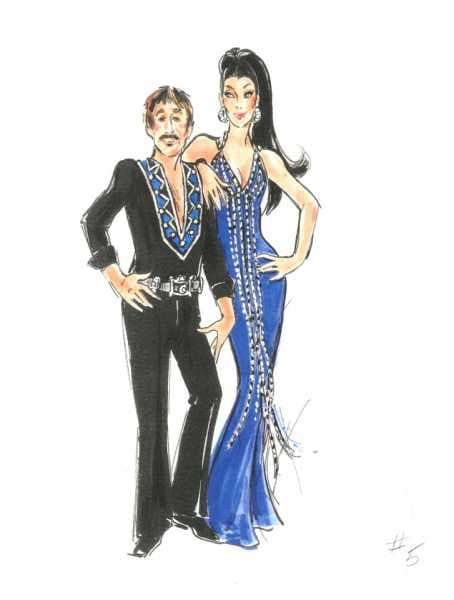
6. “I could do all kinds of crazy ethnic things on her that most girls couldn’t pull off,” Mackie said. Cher is half-Armenian but wore fringed Native American-inspired garb for songs like “Half Breed,” in 1973. Unsurprisingly, this has caused some Twitter commotion in recent years.
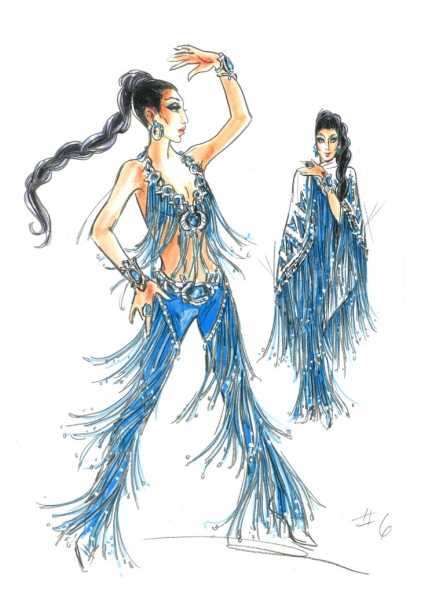
7. Mackie described the costume as a “gypsy pulled through the idea of Cher. A little bare midriff, little rags, little coins, and all that nonsense.”
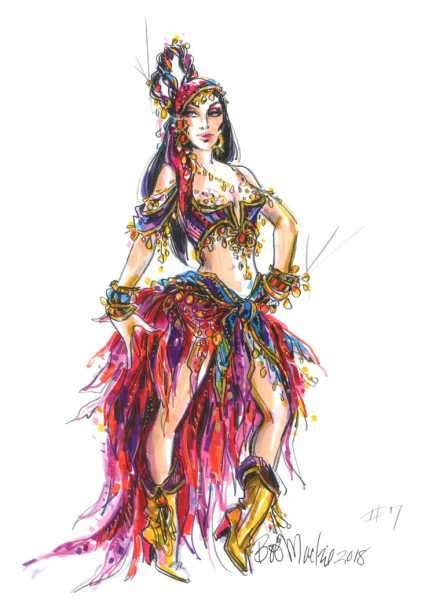
8. “The Sonny and Cher Comedy Hour,” which ran until 1974 (the year of Sonny and Cher’s divorce), included comic “vamp” sketches. “She would do famous women from history,” Mackie said. “This was Empress Joséphine.”
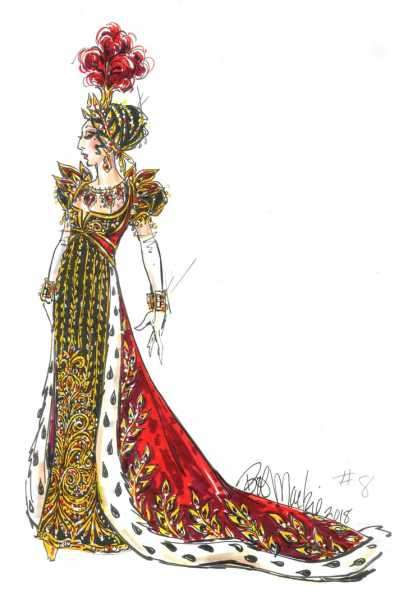
9. A “Cher Show” takeoff of the “nude” dress, from the 1975 cover of Time. “It was just one layer of fabric and beads in the right places,” Mackie recalled. In the original version, he used a French fabric called souffle. “It’s very flammable. But who knew?”
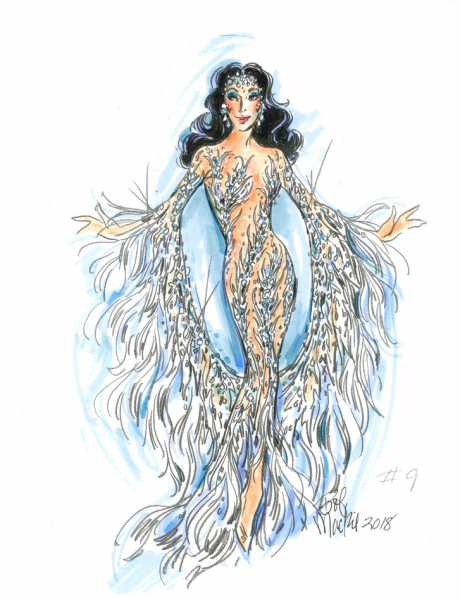
10. In “The Cher Show,” she wears this ensemble to audition for Robert Altman, who directed her in her Broadway début, in 1982. “There’s not a diamond, not a sequin on the whole thing,” Mackie said. “It’s very vulnerable. That’s the way she looked quite often when nobody was seeing her. She certainly didn’t want to audition for Altman all dolled up.”
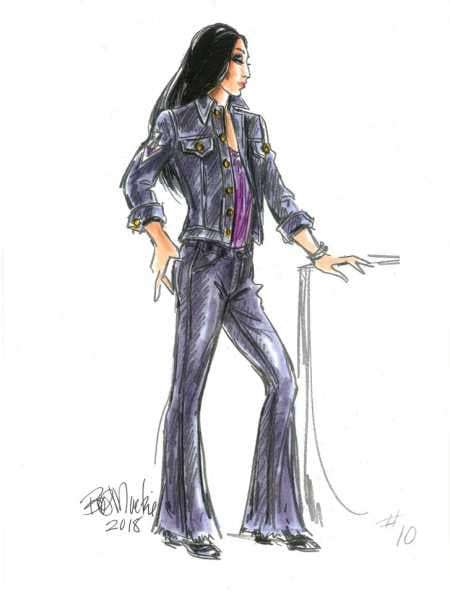
11. The “If I Could Turn Back Time” look, from 1989. “She still wears a version of that onstage to this day,” Mackie said. “The audience just goes crazy.” For Broadway, Mackie added the wings. When Cher saw it, he recalled, “She said, “I didn’t wear wings!’ I said, ‘You would have if I’d drawn them.’ She said, ‘Well, I don’t know. Maybe.’ ”
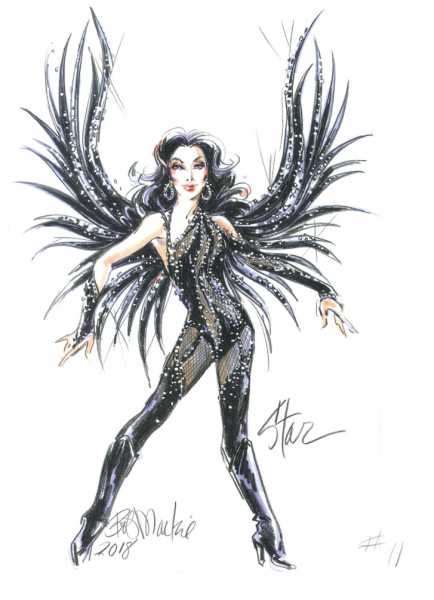
12. Cher’s Oscars dress from 1984, when she was nominated for the first time, for “Silkwood.” (She lost to Linda Hunt, for “The Year of Living Dangerously.”) “It was still Cher-like, but it wasn’t goofy,” Mackie said. “It’s made out of chiffon with bugle beads and some little diamantes and sequins. It was kind of see-through but not so you’d really notice.”
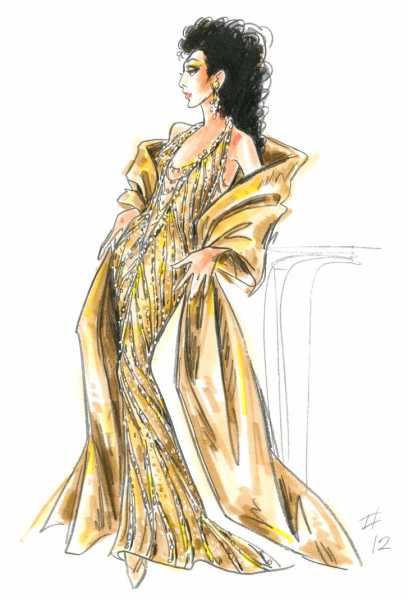
13. The iconic Oscars dress from 1986. “She was pissed off, because she didn’t get nominated for ‘Mask,’ ” Mackie said. “There were a lot of people who said, ‘That’s not fashion!’ And I said, ‘Of course it’s not fashion. It’s a crazy getup for attention.’ And it did get attention—people talk about it still.”
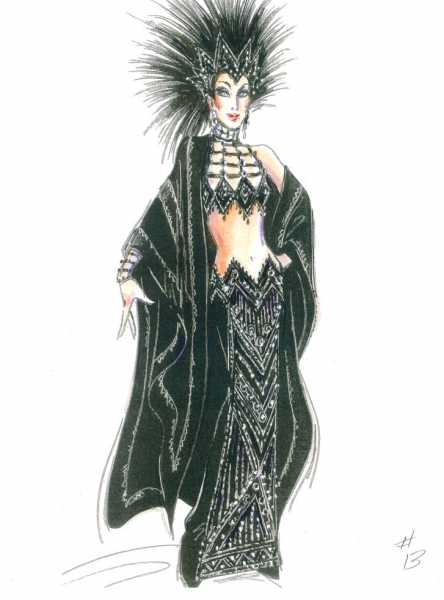
14. When Cher finally won her Oscar—in 1988, for “Moonstruck”—she accepted it in this somewhat more subdued gown. “She wanted to wear one of those sheer dresses that covered just what you needed to cover, and the rest was up for grabs,” Mackie said. “Of course, getting all dressed up and winning—you can’t beat that. She just wanted to look like Cher.”
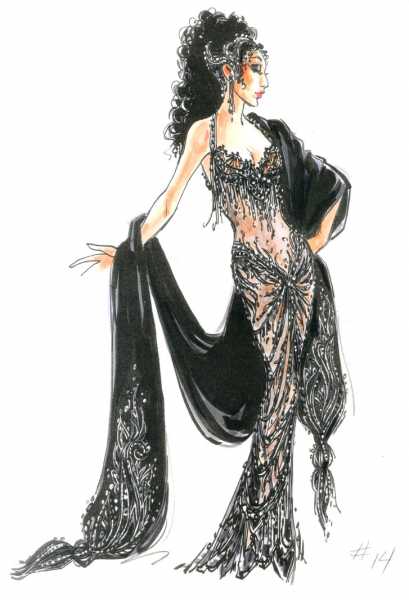
15. At the end of “The Cher Show,” the three lead actresses come out in what Mackie called “warrior-goddess” outfits, including this one, inspired by her look on the cover of the album “Take Me Home,” from 1979. “That’s the sort of Egyptian version of her warrior goddess,” Mackie said. “Nobody looks better in Egyptian clothing than Cher. The poor actresses that have to wear the things she wore!”
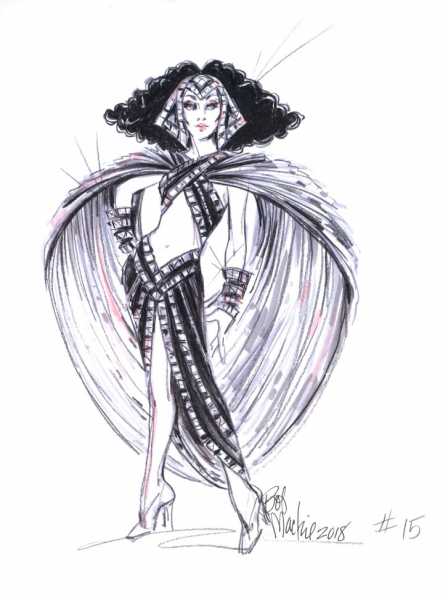
MORE FROM
Culture Desk
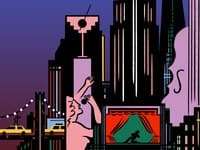
What to Do in N.Y.C. This Weekend: PJ Morton, Mark Morris, and More

Twelve Feel-Good Seasonal Pop Classics, with and Without Christmas

The Enduring, Incandescent Power of Kate Bush

Comma Queen: A Grammarian’s Xmas Gripes

“The Head and the Load,” William Kentridge’s Homage to Africa in the Great War

Can Artists Organize? The Story of WAGE
Sourse: newyorker.com

